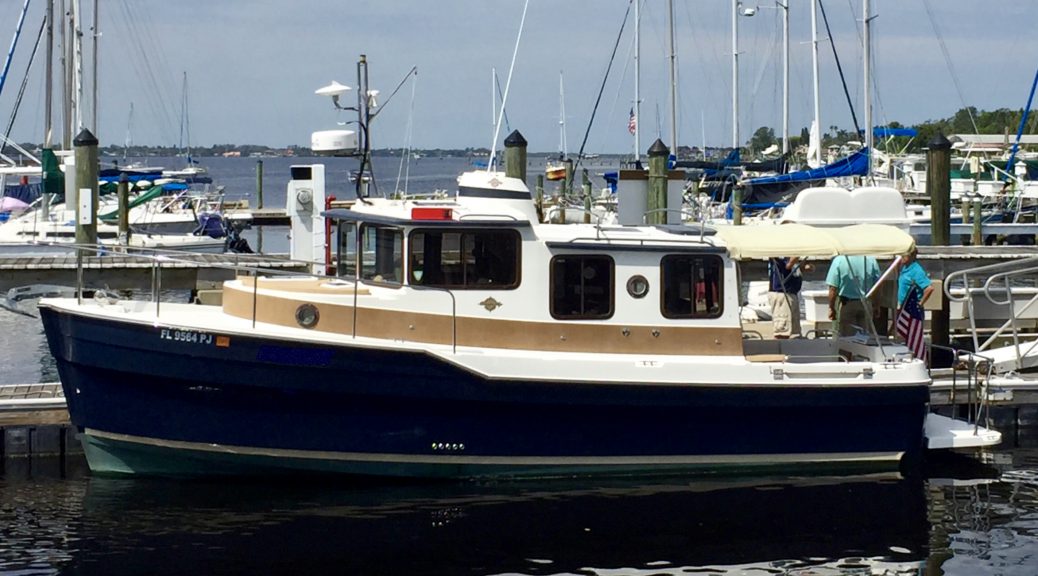The Boat
M/V Blue Sky is a 29 foot Ranger Tug built in 2012 by Fluid Motion of Kent, Washington, USA.
She is officially 29 feet long, but if you measured from the tip of the windlass to the back of the swim step she measures about 33 feet. Her beam, or width, is 10 feet. Her keel is approximately 29 inches below the waterline, and the top of her mast is about 13’ above the water.
The hull is a semi-displacement design that allows for both efficiency and speed. If fuel economy is the goal, the Tug is comfortable motoring at full displacement hull speed, which is around 8 knots. But if necessary it is possible to reach speeds of up to 20 knots when up on plane. This wide range of operating speeds is somewhat unique.
Blue Sky is powered by a single inboard engine, a six-cylinder, 260hp Yanmar diesel. It is water cooled, drawing cool water in from beneath the boat, and returning the warm water.
Bow and stern thrusters provide a way to steer the boat in tight quarters and at slow speeds. A pair of joysticks provide a super convenient way to move the boat.
Although the boat is 6 years old, the helm electronics are mostly modern and full of powerful capabilities. At the heart of the system is a Garmin 5215 chartplotter. This device displays a moving map (chart) and can overlay the data from the onboard radar, AIS data about nearby boats, or weather from an XM subscription. It constantly senses and displays the depth of the water beneath the keel. The chartplotter drives a garmin autopilot, which can hold a specific course or follow a pre-programmed route.
We don’t carry gasoline, propane, butane, or any other fuel. Aside from diesel there is only one other form of energy, and that is electricity. Electric power can come from several sources. Shore power connectors can be plugged in to dockside outlets. An onboard Cummins/Onan diesel generator is available to produce up to 5 kw of electricity when necessary. A battery bank consisting of four AGM batteries is located below deck. When the main engine is running, a 160 amp alternator charges the batteries. An inverter converts the stored DC electricity into AC current.
